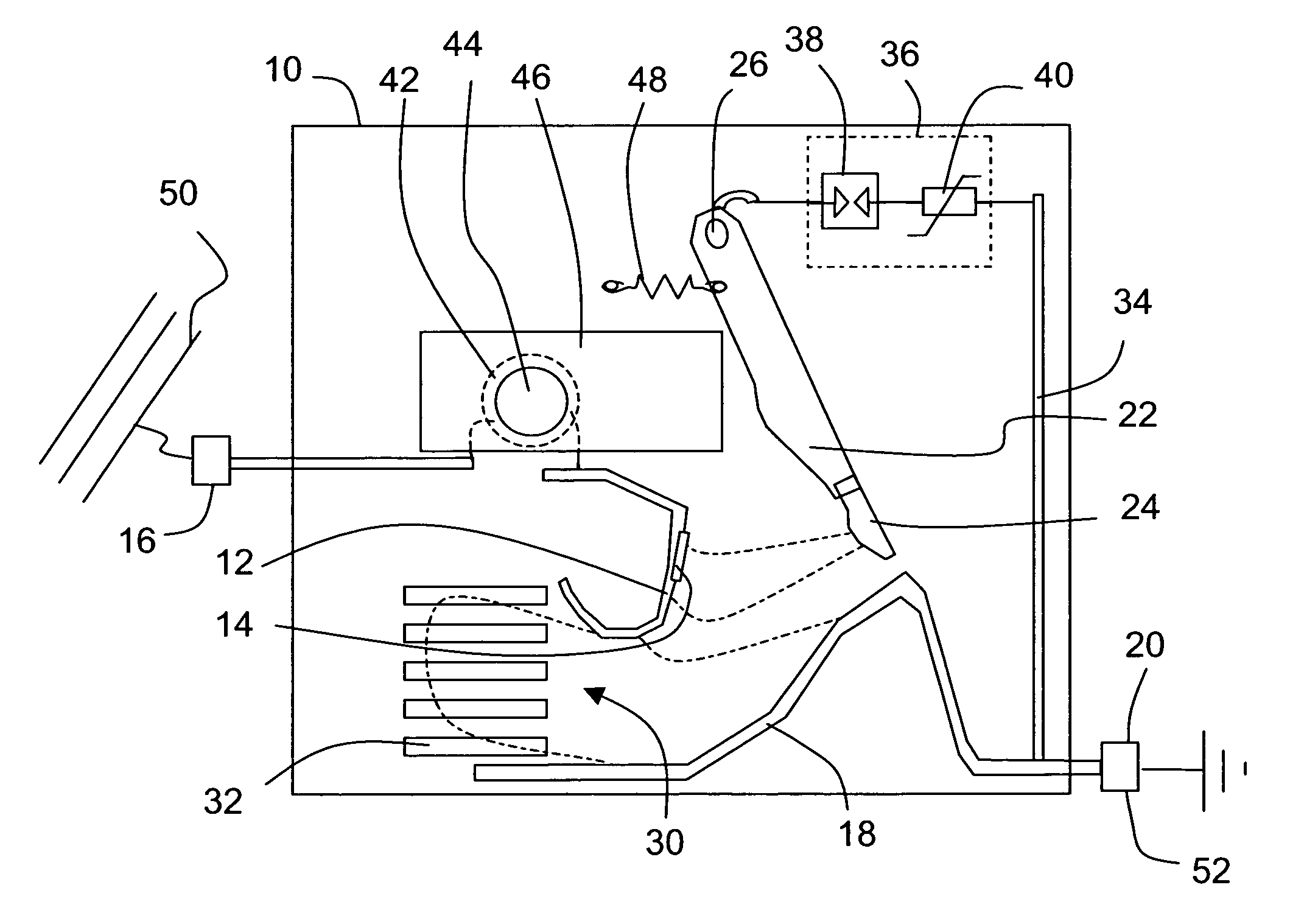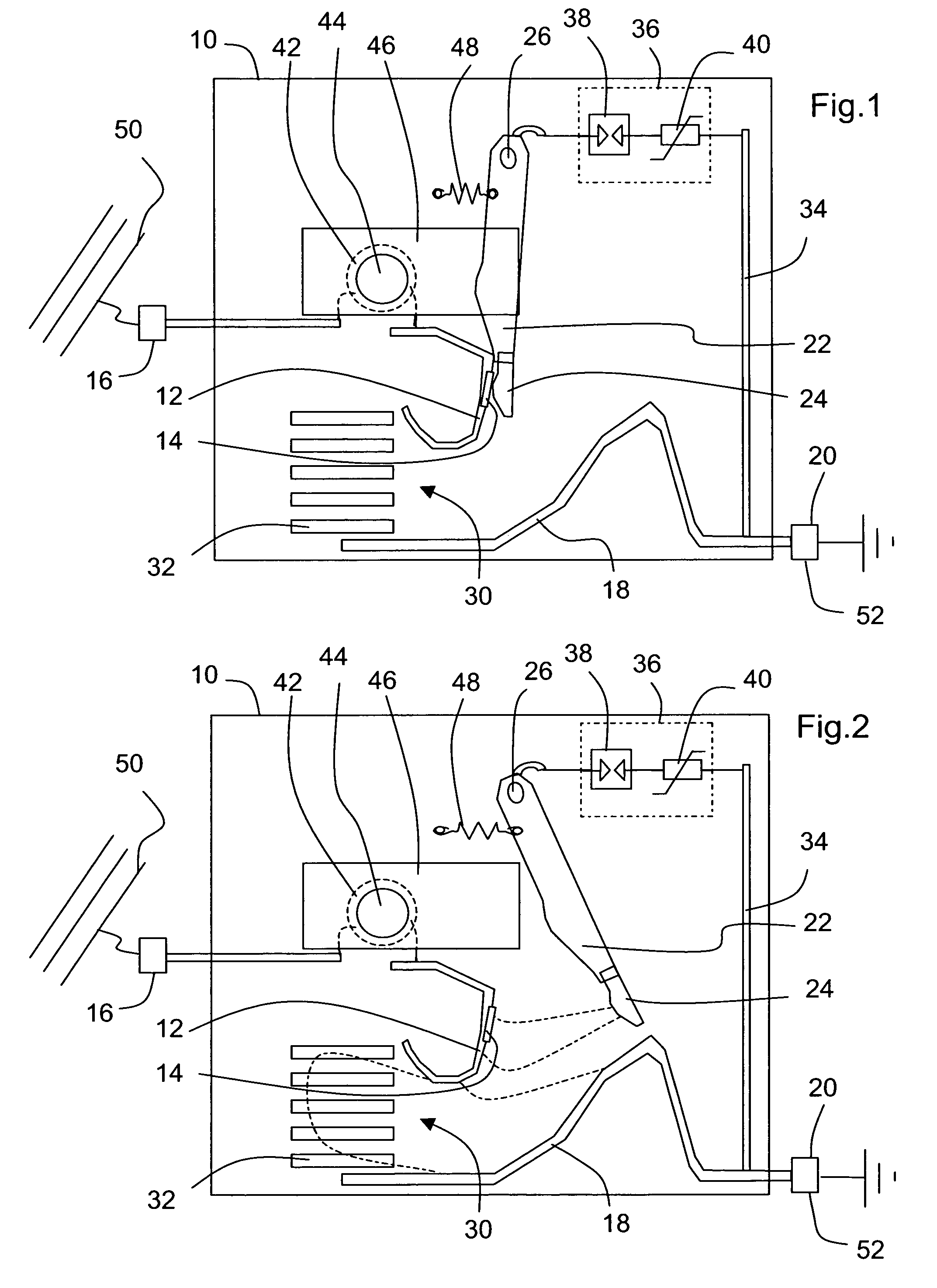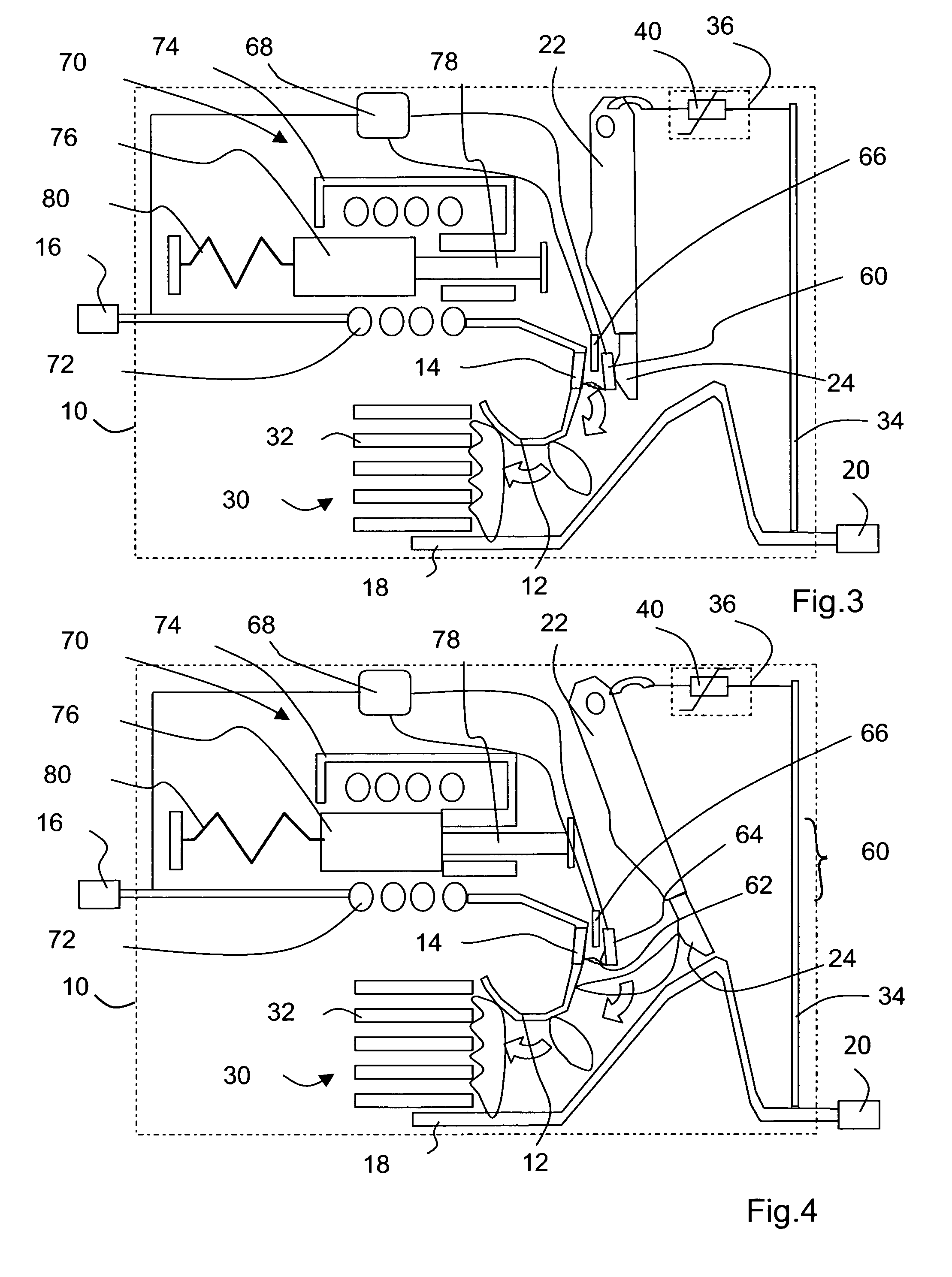Device for protection against voltage surges with mobile electrode
a technology of mobile electrodes and voltage surges, applied in the direction of overvoltage protection resistors, emergency protective arrangements for limiting excess voltage/current, protective switch details, etc., can solve the problem of limiting the current flowing in the variable resistor, the variable resistor is therefore not efficiently protected, and the risk of the variable resistor being damaged. , to achieve the effect of double protection of the dipole and limiting the current flowing in the dipol
- Summary
- Abstract
- Description
- Claims
- Application Information
AI Technical Summary
Benefits of technology
Problems solved by technology
Method used
Image
Examples
first embodiment
[0032]In FIGS. 1 and 2 a protection device against voltage surges according to the invention is represented. Inside a molded case 10 made of insulating synthetic material there are arranged a first connecting electrode 12 provided with a fixed contact 14 and connected to a first connecting pad 16, a second connecting electrode 18 connected to a second connecting pad 20, and a mobile transfer electrode 22 provided with a mobile contact 24, pivoting around a fixed axis 26 from an operating position represented in FIG. 1, ensuring contact between the two contacts 14, 24, to a switching position represented in FIG. 2, in which position the mobile electrode 22 is close to the second connecting electrode 18. The two connecting electrodes 12, 18 are located at a distance from one another, and bound the inlet of an arc chute 30 equipped with deionizing fins 32.
[0033]The second connecting pad 20 is also connected to the mobile electrode 22 by means of a circuit branch 34 containing an electr...
fourth embodiment
[0050]The device differs from the previous embodiments essentially by the fact that it is provided with an opening mechanism 90 of the type that is usually to be found in circuit breakers. Such a mechanism comprises an upper rod 92 and a lower rod 94 forming a toggle joint 96 connecting a catch 98 to an electrode support bar 100, supporting the mobile electrode 22 by means of a contact pressure spring 102. The catch 98 pivots around a fixed axis 104 and is retained by a latch 106 in a latching position. A handle 108 pivoting around a fixed geometric axis 110 is connected to the swivel-pin 112 of the toggle 96 by means of an energy storage spring 114. An electromechanical relay 116 controls the position of the latch according to electrical parameters such as the intensity of the current flowing in the electric dipole 36 as a function of time. In the closed position of the mechanism, in FIG. 6, the catch 98 is in the latched position and the mobile electrode 22 is in the operating po...
PUM
 Login to View More
Login to View More Abstract
Description
Claims
Application Information
 Login to View More
Login to View More - R&D
- Intellectual Property
- Life Sciences
- Materials
- Tech Scout
- Unparalleled Data Quality
- Higher Quality Content
- 60% Fewer Hallucinations
Browse by: Latest US Patents, China's latest patents, Technical Efficacy Thesaurus, Application Domain, Technology Topic, Popular Technical Reports.
© 2025 PatSnap. All rights reserved.Legal|Privacy policy|Modern Slavery Act Transparency Statement|Sitemap|About US| Contact US: help@patsnap.com



